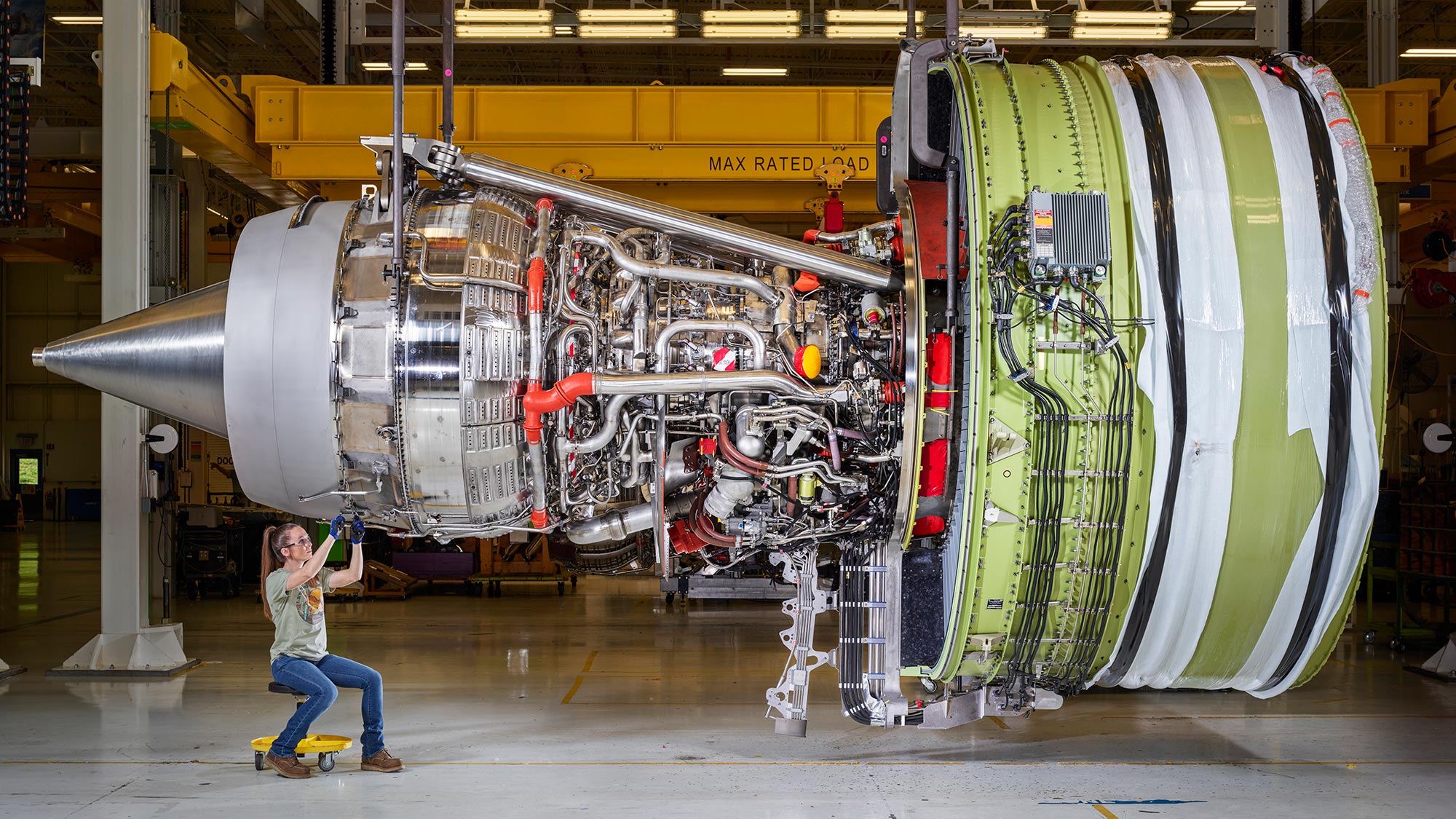THE NEXT TIME you travel on an airplane, consider the giant engines that muscled it into the sky. Technically known as turbofans, they inhale massive amounts of air and blow it out the back to generate enormous thrust. In fact, one of the engines that General Electric creates has even set a world record: In 2017, the GE9X model produced 134,300 pounds of thrust. Picture about 10 African elephants; their collective weight is equivalent to the force that one engine made.
That record-breaking moment happened at a sprawling, 7,000-acre wooded location in southern Ohio called Peebles, which is the perfect place to fire up engines without bothering any neighbors. There GE carries out a number of different types of tests. Before it delivers an engine to an aircraft maker, the company puts each turbofan through its paces, spinning it up and mimicking what the engine might do on a typical flight. And for engines still in development, they simulate other, more extreme scenarios, like how it might handle inhaling hail—or even a bird.
The purpose of all the testing is to ensure that when an airliner carrying hundreds of people accelerates down the runway and lifts gracefully into the sky, the turbofan under each wing functions as it should. And not just then, but at every moment of a long flight. Take a look at what goes into this high-stakes operation.

↑ The gray globe composed of hexagonal, screen-like sections serves a smooth purpose: to streamline the air that flows into the GE9X engine mounted next to it so the data the company collects isn’t distorted by air turbulence. One day, engines of this type will propel Boeing’s 777X aircraft.

↑ Engines like this GE90 are capable of gulping down 8,000 pounds of air in a single second. While most air bypasses the engine’s core and is blown straight out the back, some of it goes through the center, where it’s compressed and combined with fuel, powering the super-hot inner workings of the turbofan.

↑ Filled with 19 electric fans, this enormous structure—the inlet alone is about 75 feet tall—can produce winds of 50 mph or more. With that air current, GE can examine how an engine handles crosswinds, for example, which an airliner can experience during takeoff or landing.

↑ The inside of the turbulence control dome reveals the mouth of the GE9X engine being tested. Its fan, seen near the top of the ladder, measures just over 11 feet in diameter and holds 16 blades that propel the air.

↑ This giant 75-foot-long contraption looks like it might be at home in the Star Wars universe, but it’s actually the wind tunnel seen from the side. Because the entire assembly is on tracks, the company can tweak the precise angle at which it blows air at the engine being tested.

↑ The intricate core of a GE9X is at the engine’s center. Turbofans work by inhaling air, compressing it, igniting fuel, and then using that energy to turn turbines. The result is a machine that can produce more than 100,000 pounds of thrust.

↑ The complex and colorful guts of a GEnx engine are tangled together like metal spaghetti. The turquoise casings will be removed before the engine hits the skies. Inside turbofan engines are two turbines: a low-pressure turbine and a high-pressure turbine. The former powers the compression stage of the machine, while the latter drives the fan blades up front.

↑ Twenty-two elegant, curvy fan blades sit at the mouth of the GE90 engine. Made out of carbon-fiber composite with a titanium edge, they inhale air and propel it out the back, producing most of the engine’s incredible thrust.

↑ If an engine inhales something it shouldn’t—like a bird—it needs to be able to handle the incident without failing in a catastrophic way. These colorful tanks hold compressed air, and when connected with a matching barrel, the tubes fire objects like hailstones or birds (which have been euthanized, frozen, then thawed out before the test) into a stationary test engine.

↑ This illuminated test cell is one of the spots where GE lets its largest engines stretch their legs. The concrete walls measure an astounding 20 feet thick. A turbofan can spend up to six hours in testing, during which time engineers put it through situations that mimic flight to ensure it’s ready to carry planes full of passengers through the sky.
Read more PopSci+ stories.

